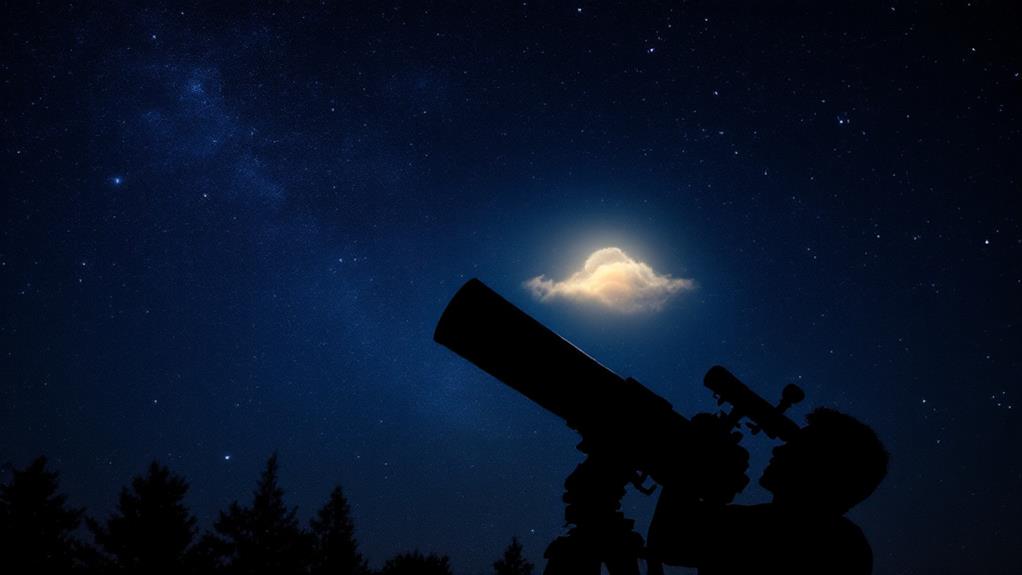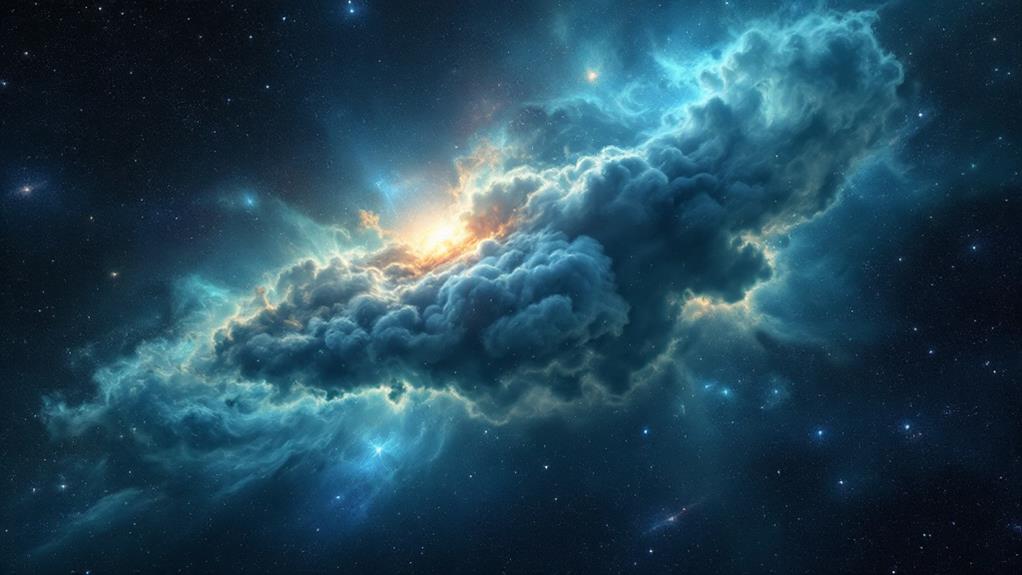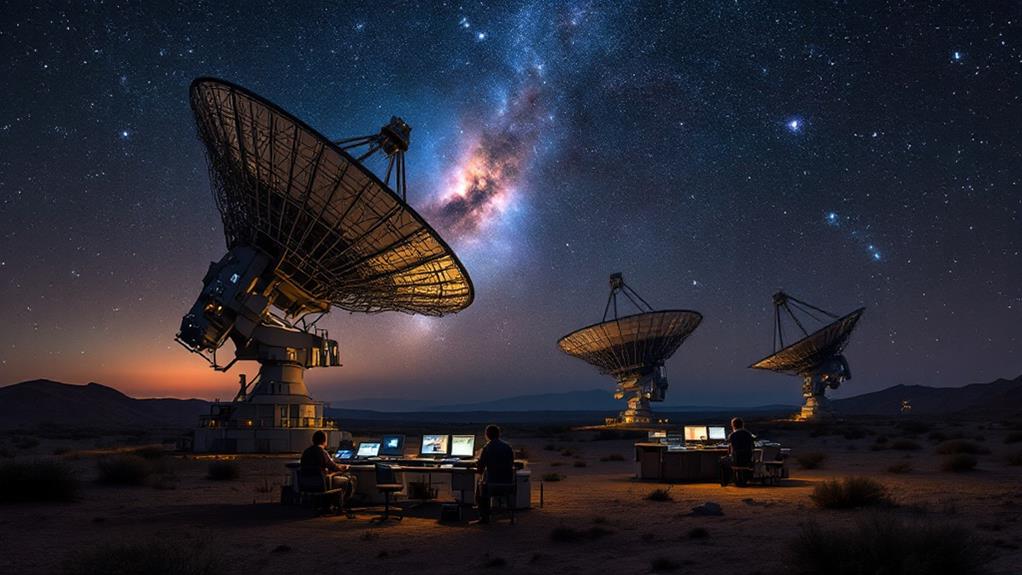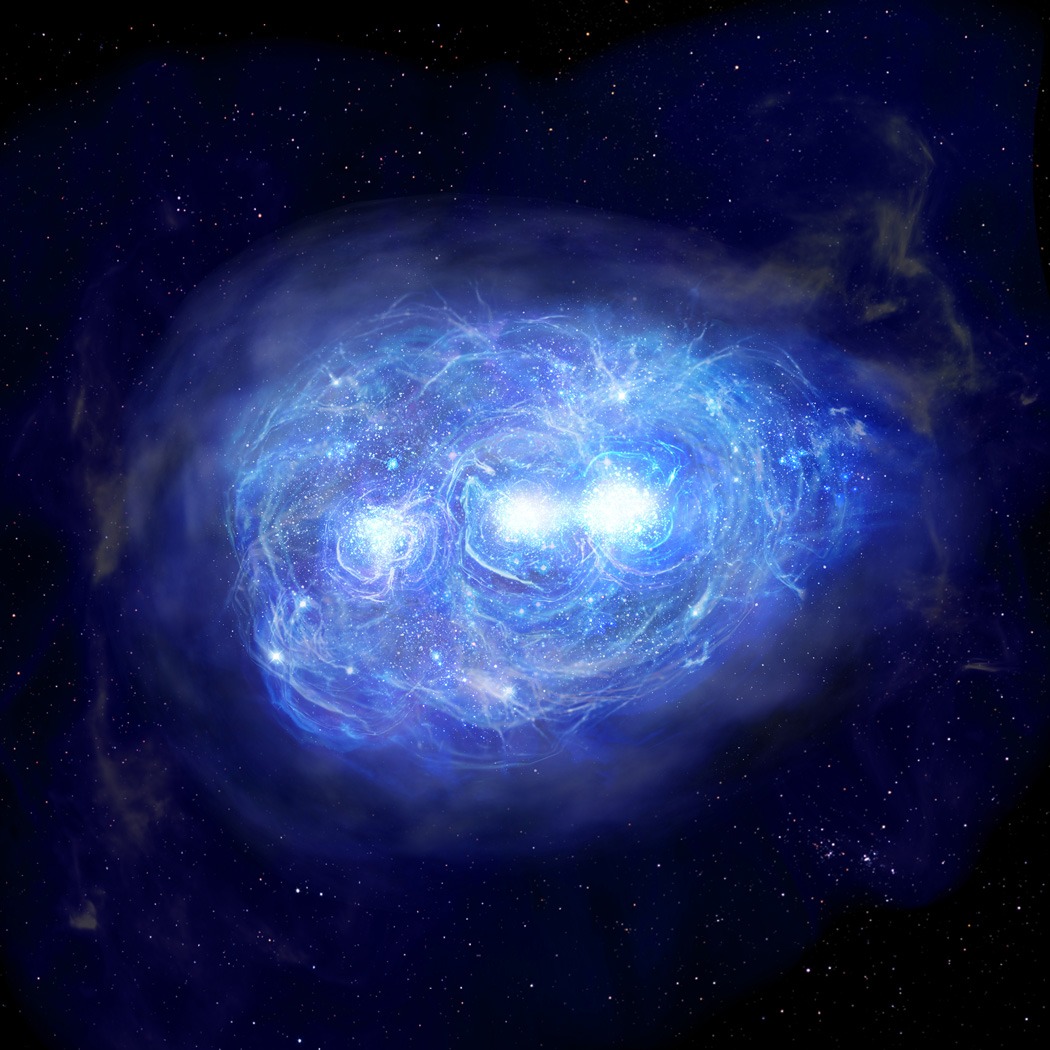Who Is Masami Ouchi - Discoverer of the Himiko Cloud?

Masami Ouchi is a renowned Japanese astronomer who identified the Himiko Cloud, a massive celestial object that's revolutionized our comprehension of the early universe. Born in Tokyo in the late 1970s, Ouchi excelled in physics and astronomy from a young age. He quickly became a rising star in the field after completing his doctoral studies, focusing on early universe and galaxy formation. His pioneering discovery of the Himiko Cloud, a 55,000 light-year-wide object dating back 12.9 billion years, has challenged existing theories about galaxy formation and evolution. Ouchi's work has opened new avenues for research, potentially rewriting cosmic history as it is understood.
Early Life and Education

Two key factors shaped Masami Ouchi's early years: his birthplace and his educational path. Born in Tokyo, Japan, in the late 1970s, Ouchi grew up in a city known for its blend of tradition and technological innovation. This environment sparked his curiosity about the world around him from an early age. Ouchi's family background played an essential role in nurturing his childhood interests, with his parents, both educators, encouraging his inquisitive nature and providing him with ample resources to investigate science and astronomy, including the Subaru Telescope's wide-field survey that later led to the discovery of the Himiko Cloud.
As he progressed through school, Ouchi's passion for astrophysics became evident. He excelled in mathematics and physics, regularly participating in science fairs and competitions. His academic prowess earned him a spot at the prestigious University of Tokyo, where he pursued a degree in astrophysics.
During his undergraduate years, Ouchi's interest in distant galaxies and the early universe began to take shape. This focus would eventually lead him to his revolutionary discovery of the Himiko Cloud, cementing his place in astronomical history.
Career in Astronomy
Masami Ouchi's career in astronomy took off soon after he completed his doctoral studies. His observational experience and telescope expertise quickly made him a rising star in the field. You'll find that Ouchi's work has focused primarily on the early universe and galaxy formation.
Throughout his career, Ouchi has:
- Led numerous research projects at prestigious institutions
- Published groundbreaking papers in top scientific journals
- Developed innovative techniques for studying distant galaxies
Ouchi's most famous discovery came in 2009 when he and his team identified the Himiko Cloud, an enormous galaxy in the early universe. This finding challenged existing theories about galaxy formation and earned Ouchi international recognition. Additionally, Ouchi's work has had significant environmental and climatic impact by studying the effects of lightning and thunderstorms on ecosystems and the climate.
As you investigate Ouchi's contributions, you'll see that he's continued to push the boundaries of astronomical research. He's used cutting-edge telescopes and instruments to peer deeper into space and time, uncovering new understandings about the universe's earliest days. Ouchi's work has inspired a new generation of astronomers and helped shape our comprehension of cosmic evolution.
The Subaru Telescope Project

One of the most significant projects in Masami Ouchi's career has been his work with the Subaru Telescope. You'll find this impressive instrument perched atop Mauna Kea in Hawaii, where it's been a game-changer for astronomers since 1999. Ouchi has harnessed the telescope's capabilities to explore the boundaries of our understanding of the early universe.
The Subaru Telescope's 8.2-meter primary mirror and advanced imaging technology have allowed Ouchi to develop innovative observational techniques. He's used these to search for distant galaxies and quasars, objects that existed when the universe was just a fraction of its current age. Ouchi's work with Subaru has been instrumental in unearthing some of the most distant known galaxies, including the famous Himiko Cloud.
You'll appreciate how Ouchi's expertise in utilizing the telescope's wide-field imaging and spectroscopic capabilities has led to groundbreaking discoveries. He's refined methods for identifying faint, distant objects and has contributed significantly to our understanding of galaxy formation and evolution in the early universe. Ouchi's work with the Subaru Telescope continues to push the boundaries of observational astronomy.
Discovery of Himiko Cloud
A cosmic giant looms in the distant past. You're about to uncover the story of the Himiko Cloud, a massive celestial object that's captured the imagination of astronomers worldwide. This remarkable discovery, made by Masami Ouchi and his team, has revolutionized our understanding of early universe formation.
The Himiko Cloud isn't your typical atmospheric phenomena. It's an enormous cloud formation that existed when the universe was just 800 million years old. To grasp the significance of this finding, consider these key points:
- Size: Himiko is about 55,000 light-years across, making it one of the largest objects known in the early universe.
- Age: It dates back to approximately 12.9 billion years ago, offering a rare glimpse into cosmic history.
- Composition: The cloud consists primarily of hydrogen and helium, the building blocks of early stars and galaxies.
Ouchi's discovery of Himiko has opened new avenues for studying the formation of galaxies and the evolution of the universe. It challenges existing theories about cosmic structures and provides illuminating observations into the processes that shaped our universe in its infancy.
Significance of the Finding

The unearthing of the Himiko Cloud has far-reaching implications for our understanding of the early universe. You'll find that this discovery challenges existing theories about galaxy formation and evolution in the cosmic dawn era. It's a window into the processes that shaped the universe we see today, offering insights into how the first galaxies formed and grew.
The significance of this finding extends beyond astronomy. It's sparked interdisciplinary collaboration between astrophysicists, cosmologists, and even particle physicists. You're witnessing a convergence of scientific fields as researchers work to unravel the mysteries of Himiko.
The cosmological implications are profound. You're looking at evidence that could reshape our models of the early universe. It's forcing scientists to reconsider the timelines of galaxy formation and the role of dark matter in these processes. The Himiko Cloud's existence suggests that massive galaxies formed earlier than previously thought, which could impact our understanding of cosmic structure formation.
This discovery isn't just about one cloud; it's opening new avenues for research into the early universe. You're at the forefront of a scientific revolution that's rewriting our cosmic history.
Research Methodology
Through innovative observational techniques, Masami Ouchi and his team uncovered the Himiko Cloud. Their research methodology combined state-of-the-art technology with meticulous data analysis techniques to detect this ancient cosmic structure. You'll find that Ouchi's approach revolutionized the way astronomers search for distant galaxies.
The team's observational methodologies relied on:
- The Subaru Telescope's wide-field camera
- Advanced spectroscopic analysis
- Multi-wavelength observations across various instruments
By using these tools, they were able to identify the Himiko Cloud's unique properties. You'd be amazed at how they sifted through massive amounts of data to pinpoint this remarkable discovery. Their process involved filtering out noise and focusing on specific spectral signatures that indicated the presence of an unusually large and bright object in the early universe.
Ouchi's team didn't stop at initial detection. They conducted follow-up observations using other telescopes to confirm their findings and gather more detailed information about the cloud's composition and structure. This thorough approach validated their discovery and provided a wealth of data for further study.
Impact on Cosmology

Masami Ouchi's pioneering finding of the Himiko Cloud has sent ripples through the field of cosmology. You'll find that this discovery has far-reaching theoretical implications, challenging our understanding of the early universe. The sheer size and luminosity of the Himiko Cloud have forced scientists to reconsider existing models of galaxy formation and evolution.
The cosmological impact of Ouchi's work can't be overstated. It's provided essential insights into the reionization epoch, a period when the first stars and galaxies began to illuminate the cosmos. By studying the Himiko Cloud, researchers have gained meaningful data on the distribution of matter in the early universe and the processes that led to the formation of large-scale structures we observe today.
Ouchi's discovery has also sparked new lines of inquiry in the search for primordial galaxies and their role in cosmic evolution. It's prompted astronomers to develop more sophisticated observational techniques and theoretical models to explain the existence of such massive structures in the young universe. As a result, you're witnessing a significant shift in our cosmological frameworks, all thanks to Ouchi's pioneering work.
Other Notable Contributions
While the Himiko Cloud stands out as Masami Ouchi's most famous find, it's important to examine his other significant contributions to astronomy. Throughout his career, Ouchi has been involved in numerous scientific collaborations, pushing the boundaries of our understanding of the early universe.
You'll find that Ouchi's work extends beyond the Himiko Cloud discovery:
- He's been instrumental in developing new techniques for identifying distant galaxies, particularly those in the process of formation.
- Ouchi has contributed to our understanding of cosmic reionization, the process by which the universe became transparent to ultraviolet light.
- His research has illuminated the distribution and properties of Lyman-alpha emitters, helping to map the structure of the early universe.
In addition to his research, Ouchi has taken on administrative responsibilities at the University of Tokyo, where he leads a team of researchers. He's also played a vital role in cultivating international collaborations, particularly between Japanese and American astronomers. These efforts have not only advanced his own work but have also helped to strengthen the global astronomical community.
Awards and Recognitions

As a symbol of his pioneering research and substantial contributions to astronomy, Masami Ouchi has received numerous awards and recognitions throughout his career. You'll find that his work on the Himiko Cloud and other innovative discoveries has earned him prestigious honors from both Japanese and international institutions.
In Japan, Ouchi's achievements haven't gone unnoticed. He's been awarded the Young Scientist Award by the Astronomical Society of Japan, recognizing his early-career contributions to the field. The Japan Academy Medal, one of the country's highest academic honors, has also been bestowed upon him for his exceptional research in astrophysics.
On the international stage, Ouchi's work has garnered significant recognition. He's been invited to present his findings at major conferences worldwide, solidifying his reputation as a leading expert in early universe studies. The International Astronomical Union has acknowledged his contributions by naming an asteroid after him. Additionally, Ouchi's research has been featured in prestigious scientific journals, further cementing his status as a respected figure in the astronomical community.
Future Research Directions
Building on his pioneering revelations, Ouchi's future research directions promise to expand the limits of our understanding of the early universe even further. You'll find his upcoming work focused on pushing the boundaries of what we know about cosmic dawn and the formation of the first galaxies.
Ouchi's plans for future research include:
- Developing innovative observation techniques to detect even fainter and more distant objects in the early universe
- Exploring the relationship between the Himiko Cloud and other massive galaxies from the same era
- Investigating the role of dark matter in the formation and evolution of these ancient cosmic structures
You can expect Ouchi to utilize interdisciplinary collaborations, combining skills from astrophysics, cosmology, and advanced computational modeling. These partnerships will help him tackle complex questions about the universe's infancy and the processes that shaped it.
As technology advances and new telescopes come online, Ouchi's work will continue to enlighten us on the mysteries of our cosmic origins. His future research directions will undoubtedly contribute to our changing understanding of the universe's earliest epochs and the fundamental laws that govern it.
Frequently Asked Questions
What Is Masami Ouchi's Daily Routine When Conducting Astronomical Research?
You'll find that Masami Ouchi's daily routine in astronomical research is highly structured. You'd see a detailed daily observation schedule, starting with early morning telescope calibrations. You'd notice meticulous data collection methods throughout the day, including precise measurements and careful recording. You'd observe Ouchi analyzing results late into the night, cross-referencing with existing data. You'd witness a dedication to accuracy and consistency, essential for pioneering revelations in the field of astronomy.
Does Masami Ouchi Have Any Hobbies or Interests Outside of Astronomy?
You'd be intrigued to learn that Masami Ouchi isn't just about stars and galaxies. When he's not peering through telescopes, you'll find him exploring his artistic side. He's passionate about painting scenes, capturing the beauty of nature on canvas. It's a stark contrast to his day job, but equally rewarding. What's more, you might catch him tickling the ivories, as he's an avid classical piano player. These hobbies provide a perfect balance to his astronomical pursuits.
How Does Masami Ouchi Balance Personal Life With Professional Responsibilities?
You'll find that balancing personal life with professional responsibilities often requires careful work-life balance strategies. Managing time constraints is essential, so you might prioritize tasks and set clear boundaries between work and personal time. You'd likely schedule dedicated time for family, hobbies, and self-care. It's important to communicate your needs to colleagues and loved ones. Remember, flexibility and adaptability are key to maintaining a healthy equilibrium between your personal and professional worlds.
What Inspired Masami Ouchi to Pursue a Career in Astronomy?
You'll find that Masami Ouchi's expedition into astronomy began with a childhood fascination with stars. As a young boy, he'd spend hours gazing at the night sky, wondering about the mysteries of the universe. This early passion led him to pursue physics in his education, where he uncovered his talent for unraveling cosmic puzzles. Ouchi's drive to comprehend the universe's secrets propelled him forward, setting the stage for his future revelations in the field of astronomy.
Has Masami Ouchi Ever Considered Writing a Book About Astronomical Discoveries?
You'd be interested to know that Masami Ouchi hasn't publicly announced plans for book publishing or writing memoirs about astronomical discoveries. However, as a renowned astronomer, it's possible he's considered sharing his experiences and knowledge through writing. Many scientists in his field have penned books to make their work more accessible to the public. If Ouchi decides to write, you'll likely find his unique viewpoint on cosmic discoveries captivating and informative.


